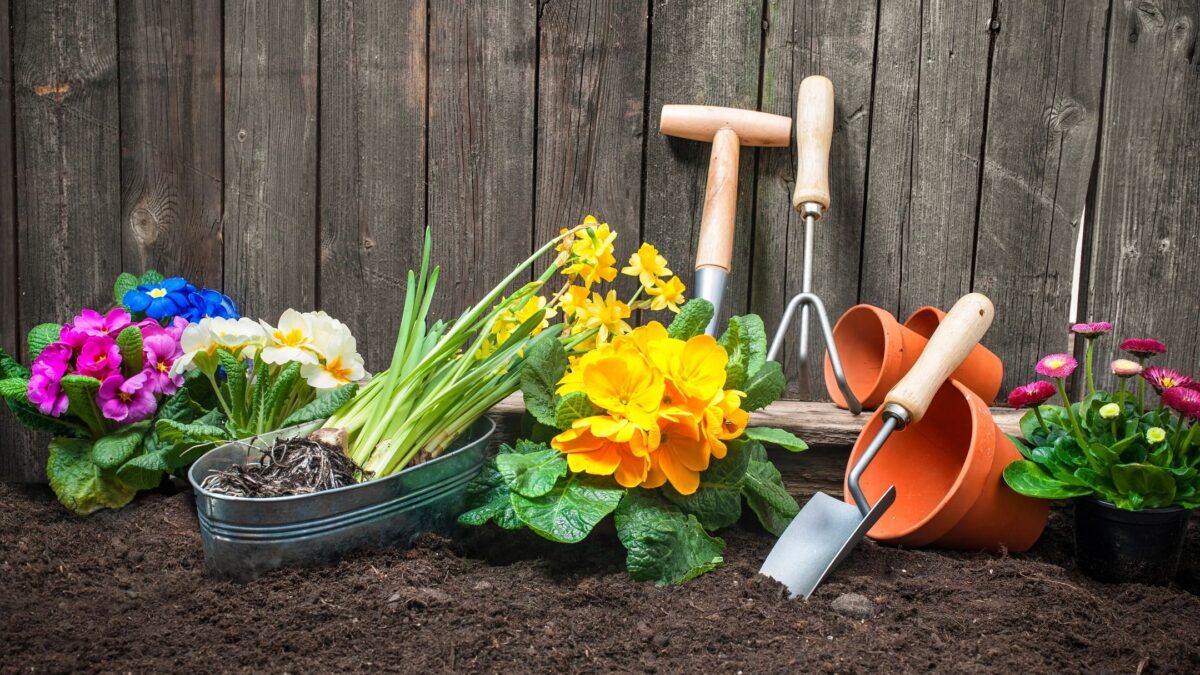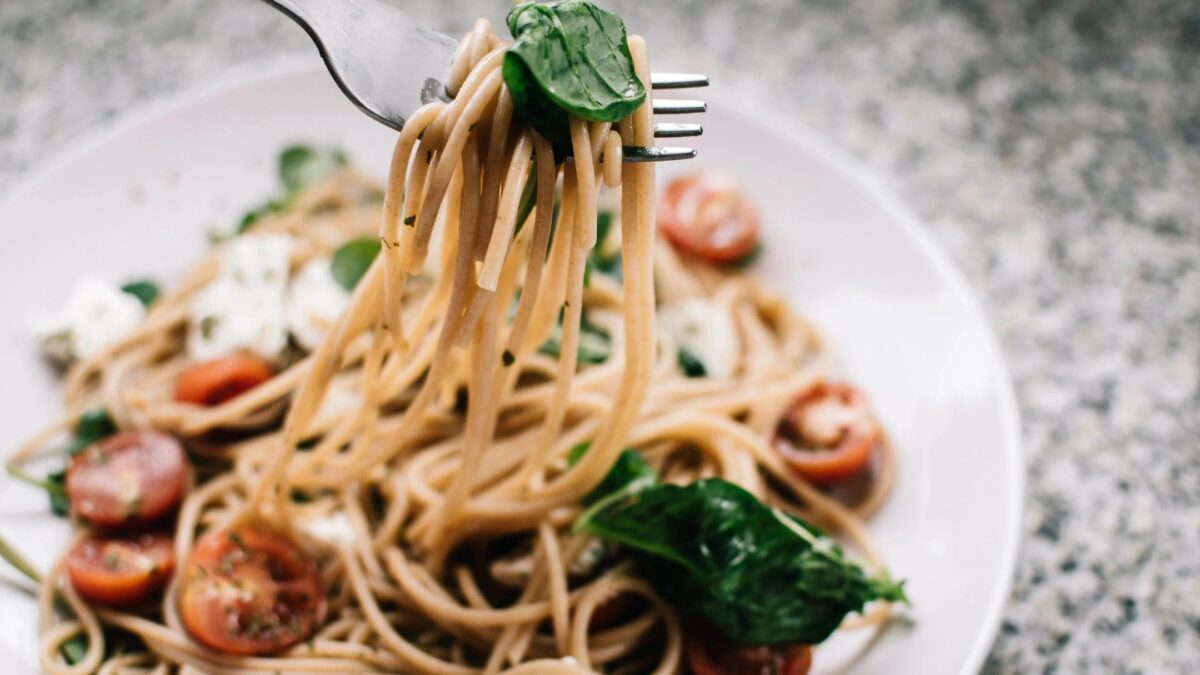It doesn’t matter if you are growing herbs to eat, for the insects in the area – or because they are some of the easiest and most forgiving plants that you can grow.
Most often, when we think about gardening, we think about it in a traditional sense, that you will have a back or front yard, some mud, and some tools.

But gardening can be as simple as a few small pots and a window ledge. In the end, your goal is to grow something, look after it, and then enjoy it as it blooms. Or, in the case of herbs, you can eat them when they are ready.
There is also something even more delightful about eating vegetables, fruit, and herbs that you have grown. You know where they have come from, how long they took to grow – and they are a little bit special.
So whether you are sitting in your stunning outdoor teak furniture set or you are at the kitchen sink planting seeds – you can enjoy delicious herbs in just a few short weeks.
The only thing you should keep in mind is that no matter where you grow your herbs, they will need plenty of sunlight.
Here is the best list of herbs for you to grow!
Basil
There are more variations of basil that you might know about, and they all need something a bit different in terms of care. Thai basil has larger purple leaves and can often taste more sweet and lemony. Whereas the basil we most associate is with Italian meals and tomato-based dishes.
There is some anecdotal evidence that if you plant tomatoes and basil in the same patch of earth, they work together and make the tomatoes taste sweeter.
One thing is for sure, though, you should plant plenty of this one if you love Italian food. As a side note, basil is also great for low blood sugar and has a healthy helping of antioxidants.
Oregano
An Italian staple, but often found across many other warmer climates and utilized in many different types of cuisine. Depending on where you live, you might see oregano referred to as wild Marjoram, and it can closely resemble sweet Marjoram in flavor.
When oregano warms up a little, you might notice that familiar ‘pizza’ smell wafting around your kitchen or your garden.
It is easy to grow but grows better in warmer climates – so it might take a little extra work.
Lemongrass
Lemongrass often gets left out of herb gardens, even though it has one of the most delicious smells and a lot of great health benefits.
One of the best things about lemongrass is that it can be brewed in a tea and has a potent lemony flavor – without needing to use it a lot.
It is worth noting that lemongrass won’t grow well, if at all, in the cold – however, it can be grown inside in temperature-controlled spaces.
If you decide that you want to grow things like lemongrass, then invest in a smart garden.
Mint
Mint grows rapidly and can quickly take over a space. It can be better to plant mint in a pot so that it doesn’t overtake the other herbs. One of the best things about mint is that you can brew tea with it from the minute it is pulled from the soil (pending a good wash, of course).
Mint of all types help to freshen breath, aid digestion, and soothe stomach complaints.
Chervil
Chervil and parsley look very similar but offer a different flavor profile to any dish. What makes chervil a must is that it can work with eggs, fish, chicken, salads, and vegetable dishes. Since it is so versatile, it might become one of your most-used herbs.
One of the most common cuisines to use chervil is French delicacies like bearnaise sauce; chervil brings an aniseed flavor.
It can often be referred to as French parsley or Arabic chervil. It is an heirloom herb and is often found in any fine herb mixes along with chives, parsley, and tarragon.
Bay Leaves
Love spicy flavorful curries? How about rich and delicious pasta sauce? Or warming and hearty stew or soup on a cold day?
Each of those is given a depth of flavor that doesn’t come easily – and that is thanks to bay leaves. Bay leaves can vary in smell and can be described as sweet like honey, strong like mint, or even spicy like cloves.
Bay leaves are a must for your garden and for your food too. The longer they simmer in sauces, the more flavor they release, and most often, they are added at the start – and removed just before serving.
Tarragon
Tarragon, as mentioned above, is one of the four herbs that are in ‘fine herbs’ mixes. It brings such a distinct flavor and fragrance to food it is no wonder that it is so prevalent in French cooking.
Due to tarragon’s punchy yet delicate flavor, it complements a wide range of meats and vegetables. Most notably, tarragon pairs well with eggs, rabbit, chicken, salmon, asparagus, and carrots.
One of the meals that let tarragon shine is a chicken pot pie where the tarragon is allowed to be infused into the cream. It smells sensations and is certainly a herb that you should add to your garden.
Cilantro or Coriander
Cilantro grows really well in warmer climates like India, China, Mexico, and Southeast Asia – so for this reason, it is a good idea to grow this in a temperature-controlled space. This herb doesn’t grow well when the soil is too warm and grows particularly well early in the season.
This herb goes well in Mexican-style dishes, curries, rice dishes, soups, bread, and more.
One of the things that cilantro is said to help with is settling digestive issues, lowering blood sugars, and improving sleep! So make sure there is a little room in your garden for this wonder herb.

Sage
If you are a big meat eater, then sage should be one of the herbs that you have plenty of room for. It goes particularly well with pork and chicken but can work very well with sauce so long as not too much is added.
An enjoyable snack can be sheep cheese like manchego and fried sage leaves.
One thing you should know about sage is that it can very quickly become overpowering, so a little goes a long way.
Sage has plenty of great health benefits, too, like helping with memory and reducing inflammation.
As an additional bonus, sage grows very well and is easy to care for – so you shouldn’t need to tend to it too much. Another great thing is that its scent entices bees to come to your garden, which in turn can improve your growing efforts.
Parsley
There are a few varieties of parsley, and the most used ones are curly leaf and flat-leaf. They both offer a delicious addition to your food and, most often, it is found paired with fish dishes.
Many home cooks only use parsley as a garnish on salads or on the side of the plate. But parsley can bring a lot of balance to an otherwise too strong or hearty dish.
Often parsley works well in cheese and cream sauces, stews, potatoes, carrots, and eggs.
Much like many other herbs on the list, parsley can work wonders for the digestive system – as well as being a great source of Vitamin C.
Dill
Although dill often one gets talked about when talking about salmon dishes or with a mustard sauce. Yet dill offers a light and herb flavor that can work with a wide range of vegetables and lamb too.
Dill itself, aside from working well with a range of dishes, also has the ability to fight bad breath, reduce swelling and inflammation, and can even help with some types of cramps.
Unlike some of the other herbs on the list, dill is relatively easy to grow and, like sage, can help attract extra pollinators to your garden.
Rosemary
If you want one of the most flavourful and fragrant herbs in your garden, then rosemary is the ideal choice. What makes rosemary a fantastic addition is that it is hardy, and over the years, the bush will become more solid.
Rosemary can be used for vegetables, potatoes, sauces, chicken, and red meats. Using rosemary in a breadcrumb coating can add an extra burst of flavor. You don’t need to add much, and in combination with oregano or thyme, you have a delicious combination that can work on pizza, pasta, sauces, meat, and vegetables.
When creating your herb garden, try to think about the foods that you enjoy the most so that next time you prepare it – you have the delight of picking and preparing your own herbs.
It can be good to have a mix of herbs that complement each other so that no matter what you’re making, from baking bread to rich stews and sauces, you are ready for any occasion.
Once you have everything planted and ready for picking, you’ll be able to create an amazing amount of recipes, check these out for inspiration: Yum! Recipes – Sunshine and Rollercoasters.
















